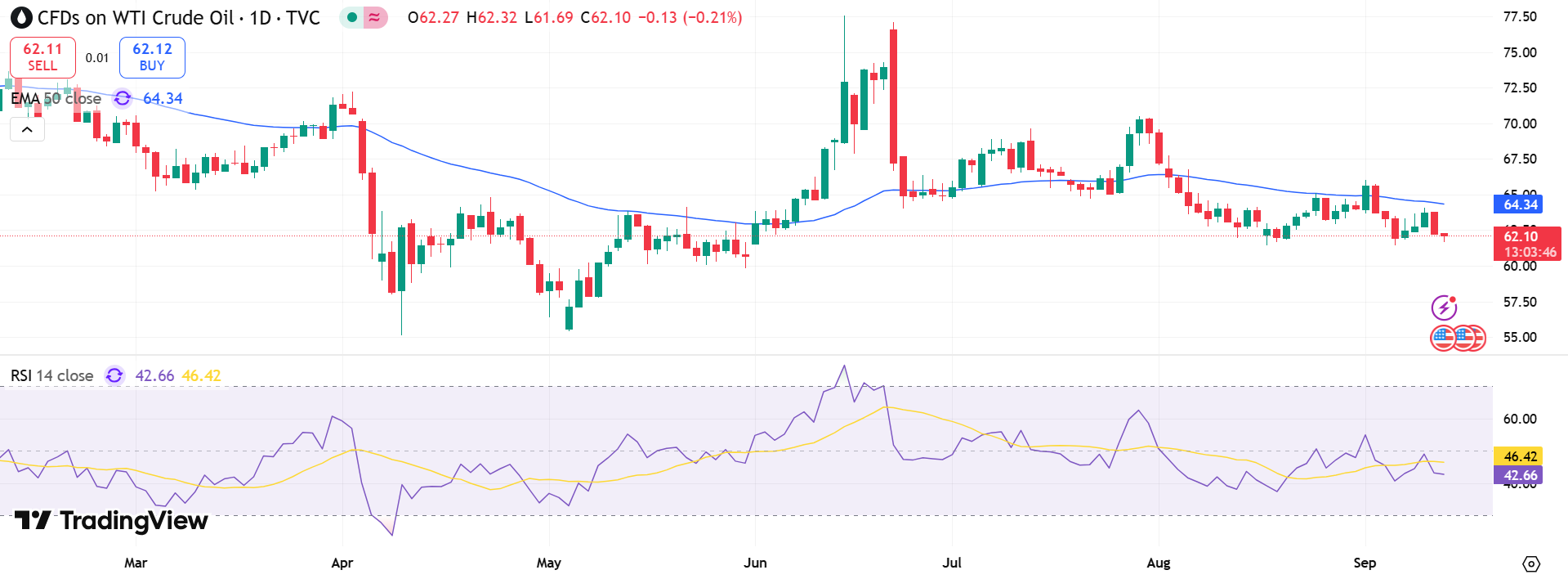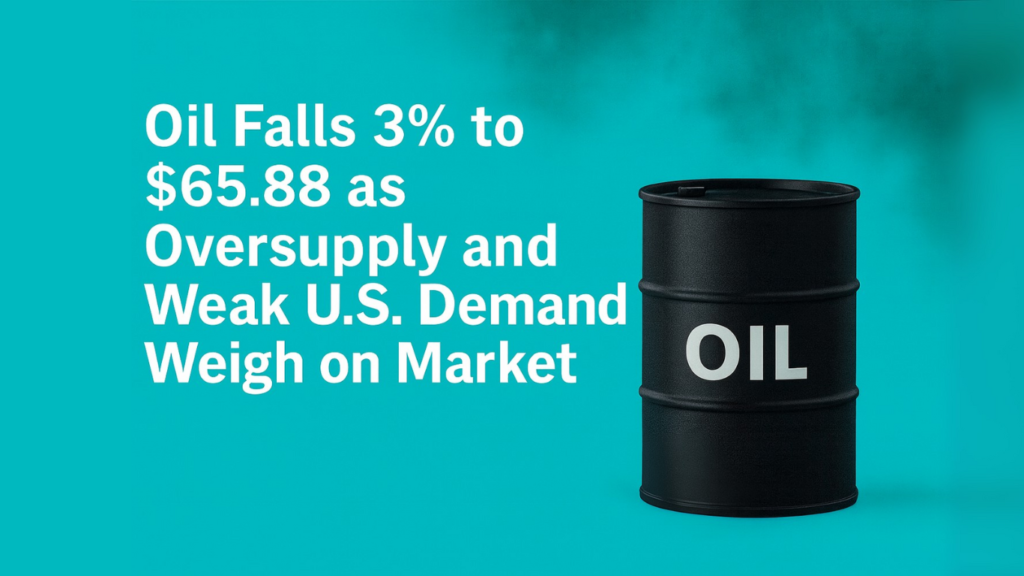Crude prices extended losses on Friday, erasing earlier gains from geopolitical concerns as oversupply and softening U.S. demand dominated trading sentiment. Brent crude slipped 49 cents, or 0.74%, to $65.88 per barrel, while U.S. West Texas Intermediate (WTI) declined 51 cents, or 0.82%, to $61.86.
The downturn followed fresh U.S. economic data that suggested demand may weaken further. Consumer prices in August climbed at the fastest pace in seven months, while new jobless claims rose sharply, reflecting a fragile labor market. Analysts expect the Federal Reserve could cut rates next week in an effort to revive growth. Lower rates typically encourage energy consumption, but concerns about demand weakness are outweighing this support in the near term.
Oversupply Concerns Deepen
The International Energy Agency (IEA) reported this week that global oil supply is rising faster than expected, fueled by OPEC+ production increases. Saudi Arabia, the group’s de facto leader, is pushing to expand market share, even as demand concerns persist.
At the same time, U.S. Energy Information Administration data showed crude inventories rose by 3.9 million barrels to 424.6 million last week. Higher stockpiles reinforced the perception of ample supply.
Key developments include:
- IEA: Forecasts faster-than-expected global supply growth
- U.S. crude inventories: +3.9M barrels, to 424.6M
- OPEC+: Output quotas raised beginning October
- Saudi shipments to China: Rising to 1.65M bpd in October, from 1.43M in September
Geopolitics Offer Limited Support
Conflicts in the Middle East and Ukraine briefly lifted crude earlier this week, with prices rising as much as 2%. Yet traders quickly shifted focus to fundamentals, leaving geopolitical risks with diminished influence over prices.

Saudi Arabia’s planned export surge to China underscores the supply side pressure, with Aramco set to ship 1.65 million barrels per day in October. Meanwhile, Russia—still the world’s second-largest producer—saw crude revenue slump in August to one of its lowest points since the onset of the Ukraine war, according to the IEA.
Despite OPEC’s upbeat long-term demand outlook through 2026, the immediate market remains caught between surplus supply and fragile consumption patterns. With economic data pointing to persistent challenges, crude benchmarks are likely to remain volatile in the weeks ahead.


